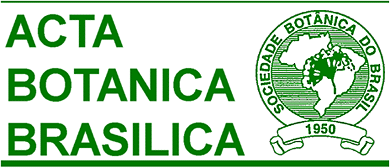Resumo em Português:
Foi realizado o levantamento florístico das pteridófitas ocorrentes no Refúgio Ecológico Charles Darwin, município de Igarassu, Pernambuco, Brasil. A área é um remanescente de Floresta Atlântica que está em processo de preservação há aproximadamente 40 anos. Visando contribuir para o conhecimento das pteridófitas e seus aspectos ecológicos em Pernambuco, foram realizadas 13 excursões, no período de um ano e meio, para observação e coleta das plantas, acompanhando as estações chuvosa e seca. Foram registradas 21 espécies, distribuídas em 16 gêneros e 12 famílias: Thelypteridaceae (5 spp.), Polypodiaceae (3 spp.), Schizaeaceae (3 spp.), Blechnaceae (2 spp.), Aspleniaceae (1sp.), Cyatheaceae (1 sp.), Davalliaceae (1 sp.), Dennstaedtiaceae (1 sp.), Dryopteridaceae (1 sp.), Pteridaceae (1sp.), Selaginellaceae (1 sp.) e Vittariaceae (1 sp.). Foi registrada uma nova referência para o Nordeste do Brasil: Schizaea subtrijuga Mart. Predominam as espécies herbáceas, terrícolas, hemicriptófitas, ciófilas, encontradas principalmente no interior da mata. Apesar da maioria das espécies registradas serem amplamente distribuídas no Estado, a presença de espécies não muito frequentes em áreas de Floresta Atlântica em Pernambuco, como Cyclodium meniscioides (Willd.) C. Presl, Salpichlaena volubilis (Kaulf.) J. Sm., Polypodium aureum L. var. aureum e Selaginella dendricola Jenman e o registro de uma nova referência para o Nordeste, evidenciam a importância desta pteridoflora.
Resumo em Inglês:
This paper presents a floristic survey of the pteridophytes of the "Refúgio Ecológico Charles Darwin", located at the municipality of Igarassu, Pernambuco State, Brazil. This area is a remnant of the Atlantic forest, which has been preserved during the last 40 years. In order to contribute to the knowledge of the ferns and its ecological traits in Pernambuco, 13 field expeditions were made during a period of one year and a half. Thus observations and collection of plants were carried out, during the rainy and the dry seasons. Twenty one species were registered, distributed in 16 genera and 12 families: Thelypteridaceae (5 spp.), Polypodiaceae (3 spp.), Schizaeaceae (3 spp.), Blechnaceae (2 spp.), Aspleniaceae (1 sp.), Cyatheaceae (1 sp.), Davalliaceae (1 sp.), Dennstaedtiaceae (1 sp.), Dryopteridaceae (1 sp.), Pteridaceae (1 sp.), Selaginellaceae (1 sp.) and Vittariaceae (1 sp.). It was registered a new reference for the northeastern Brazil: Schizaea subtrijuga Mart. The local pteridophyte species are preferentially herbaceous, terrestrial, hemicryptophyte, inhabiting the interior of the forest, as ciophilous. Despite most of the species is widely distributed in the state, the occurrence of species not frequently registered in remnants of Atlantic forest in Pernambuco, as Cyclodium meniscioides (Willd.) C. Presl, Salpichlaena volubilis (Kaulf.) J. Sm., Polypodium aureum L. var. aureum and Selaginella dendricola Jenman, and the new reference for the northeastern Brazil enhance the importance of this pteridoflora.
